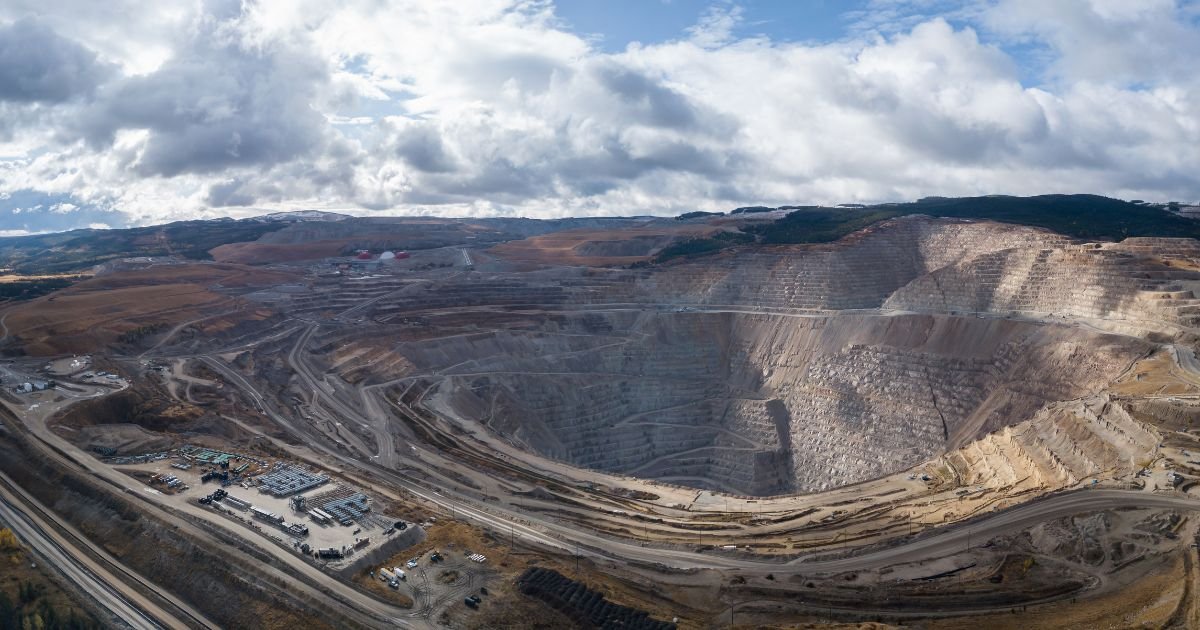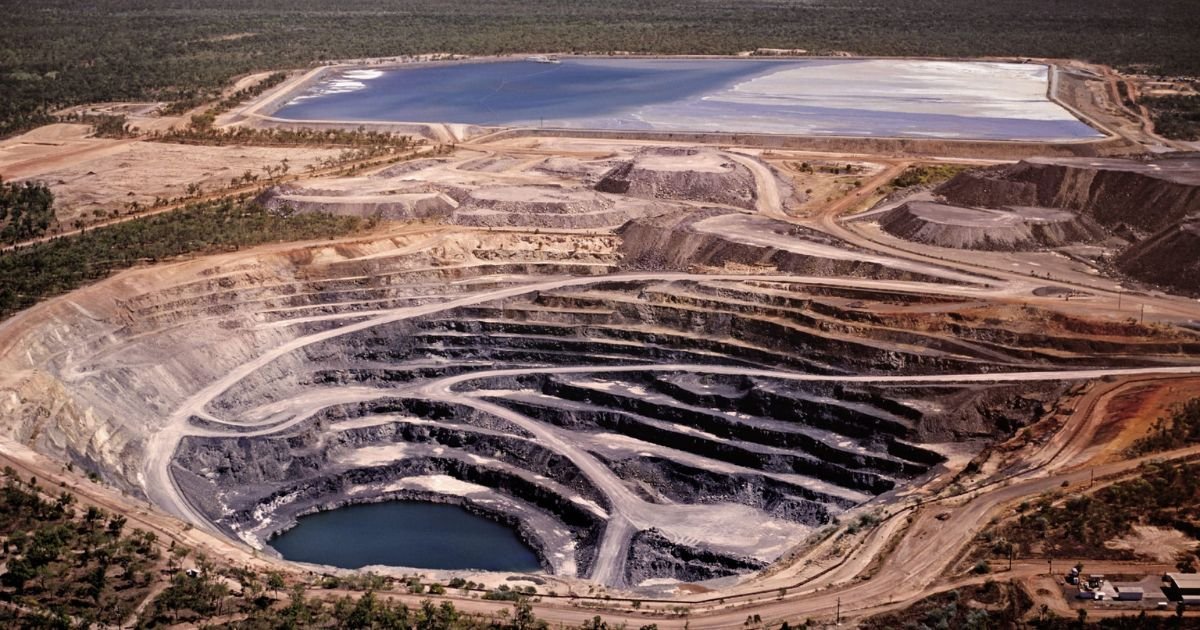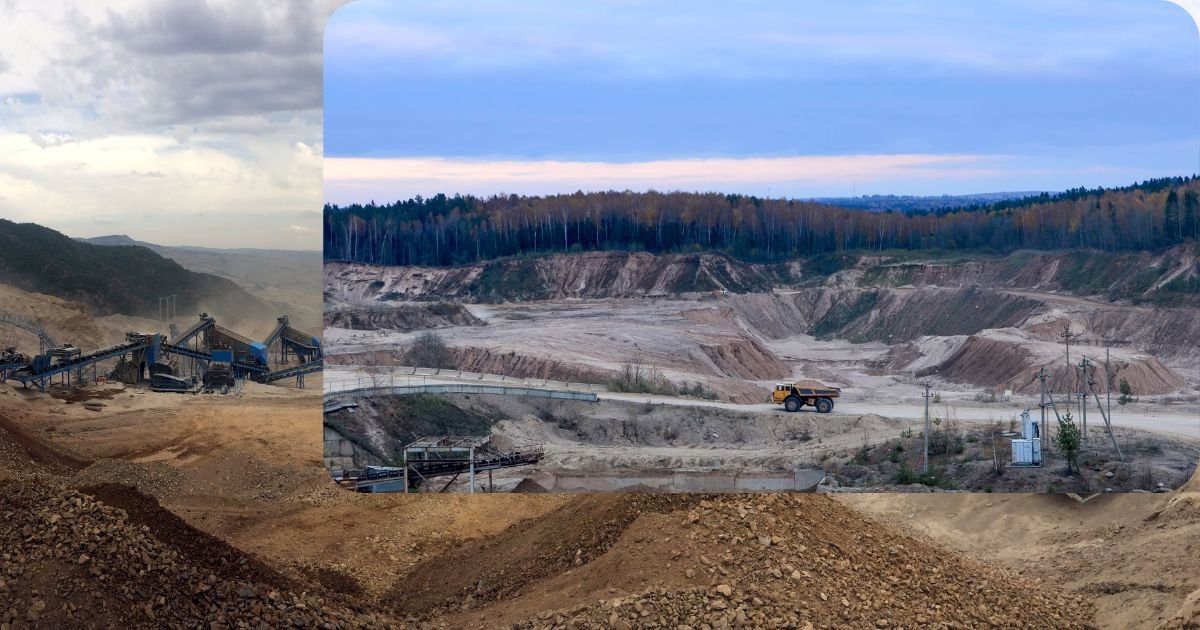Introduction to Uranium Mining
A. Understanding Uranium as a Resource – Explain the significance and properties of uranium as a valuable resource for various industries, including energy production. – Highlight its importance in the context of the US.
B. Importance of Uranium in Energy Production – Discuss how uranium plays a crucial role in generating nuclear power, contributing to the energy mix in the US. – Emphasize the relevance of uranium mining to meet the country’s energy needs.
C. Overview of Uranium Mining in the US – Provide a general overview of the history, current state, and prospects of uranium mining in the United States. – Introduce the main topics that will be covered in subsequent sections.
History of Uranium Mining in the US
A. Early Discoveries and Exploration – Explore the early discoveries of uranium in the US and the initial efforts to understand its properties and potential uses. – Discuss the role of scientific exploration in uncovering uranium deposits.
B. Role of Uranium in World War II – Explain the significance of uranium during World War II, particularly in the development of atomic weapons. – Discuss the increased demand for uranium and its impact on mining operations in the US.
C. Post-War Boom and Expansion – Explore the US’s expansion of uranium mining activities after World War II to meet the growing demand for nuclear energy. – Highlight major milestones, technological advancements, and the emergence of key mining regions.
D. Environmental Concerns and Regulations – Address the environmental challenges associated with uranium mining in the US. – Discuss the development of regulations and best practices to mitigate these concerns and ensure responsible mining operations.

Understanding Uranium Deposits
A. Types of Uranium Deposits
1. Sandstone-hosted Uranium Deposits –
Explain the characteristics of sandstone-hosted uranium deposits and their occurrence in the US. – Discuss mining methods commonly used for extracting uranium from sandstone deposits.
2. Conglomerate-hosted Uranium Deposits
– Describe conglomerate-hosted uranium deposits and their geological characteristics.
– Discuss mining techniques specific to conglomerate-hosted deposits.
3. Vein Uranium Deposits
– Explore the formation and occurrence of vein uranium deposits in the US.
– Highlight the challenges and mining approaches to extracting uranium from vein deposits.
4. Unconformity Uranium Deposits
– Explain the unique nature of unconformity uranium deposits and their significance in the US.
– Discuss the complexities involved in mining unconformity deposits.
Read More: Hyundai Motor Company
B. Geographical Distribution of Uranium
Deposits in the US – Provide an overview of the major uranium mining regions in the US. – Discuss the geological factors contributing to the distribution of uranium deposits.

Uranium Mining Techniques
A. Open-Pit Mining – Explain the process and benefits of open-pit mining for uranium extraction. – Discuss notable open-pit uranium mines in the US.
B. Underground Mining – Describe underground mining methods employed in uranium mining operations. – Highlight the safety considerations and challenges associated with underground mining.
C. In Situ Recovery (ISR) Mining – Define in situ recovery (ISR) as a technique for extracting uranium from ore without traditional mining. – Discuss the advantages, operational processes, and environmental implications of ISR mining.
D. Comparison of Mining Techniques – Provide a comparative analysis of open-pit, underground, and ISR mining techniques. – Discuss the factors influencing the choice of mining method in different scenarios.
Table of Contents
Environmental and Health Considerations
A. Environmental Impacts of Uranium Mining 1. Water Contamination – Discuss the potential for water contamination during uranium mining activities. – Address the measures taken to prevent and remediate water pollution.
2. Air Pollution
– Explain the sources and impacts of air pollution associated with uranium mining.
– Discuss emission control technologies and regulatory requirements.
3. Soil Degradation
– Explore the potential effects of uranium mining on soil quality and ecosystem health.
– Highlight soil reclamation and remediation efforts.
B. Occupational Health Risks for Miners
1. Radiation Exposure
– Discuss the risks of radiation exposure faced by uranium miners. – Explain safety protocols and monitoring practices to protect workers.
2. Respiratory Hazards

– Address the respiratory health risks associated with uranium mining.
– Discuss measures to mitigate exposure to dust and other respiratory hazards.
C. Mitigation Measures and Regulations – Highlight the regulatory frameworks and best practices to minimize environmental and health impacts. – Discuss the role of government agencies and industry initiatives in ensuring responsible mining practices.
Current State of Uranium Mining in the US
A. Major Uranium Mining Regions – Provide an overview of the significant uranium mining regions in the US, including their production capacities and contributions.
B. Leading Uranium Mining Companies – Highlight the key players in the US uranium mining industry. – Discuss their mining operations, market share, and economic contributions.
C. Production and Consumption Trends – Analyze the current trends in uranium production and consumption in the US. – Discuss factors influencing the supply and demand dynamics.
D. Challenges and Opportunities – Identify the challenges faced by the US uranium mining industry, such as regulatory hurdles and market conditions. – Explore potential opportunities for growth and innovation in the sector.
Future Prospects and Technologies
A. Advancements in Uranium Extraction Techniques – Discuss emerging technologies and techniques for more efficient and sustainable uranium extraction. – Highlight research and development efforts in the field.
B. Exploration of Unconventional Uranium Deposits – Explore the potential for exploring unconventional uranium deposits, such as deep-sea and asteroid mining. – Discuss the technological and logistical challenges involved.
C. Role of Uranium in Renewable Energy Transition – Address uranium’s role in the global transition to renewable energy sources. – Discuss the potential synergies and challenges in integrating uranium-based nuclear power with renewables.

D. Global Uranium Market Outlook – Provide an overview of the global uranium market and its impact on the US mining industry. – Discuss factors influencing uranium prices and market trends.
Read More: Uranium Mining in US
FAQs
A. What is uranium used for in the US?
Uranium is primarily used in the US for the production of nuclear energy.
It serves as a fuel in nuclear power plants, where it undergoes nuclear fission to generate heat and produce electricity.
Uranium is also used in research and medical applications, such as producing radioisotopes for medical imaging and cancer treatments.
B. How is uranium mined in the US?
Uranium in the US is mined using various techniques, including open-pit mining, underground mining, and in situ recovery (ISR) mining.
Open-pit mining involves extracting uranium from near-surface deposits by removing overlying rock and soil.
Underground mining involves tunneling into the earth to reach deeper uranium deposits.
ISR mining, also known as in situ leach mining, involves injecting a solution into the ground to dissolve and extract uranium without physically removing the ore.
C. What are the risks associated with uranium mining in the US?
The risks associated with uranium mining in the US include environmental impacts and potential health hazards.
Environmental risks include water contamination, air pollution from dust and radon emissions, and soil degradation.
Health risks for miners include radiation exposure, leading to increased cancer risks and other radiation-related illnesses.
There is also the potential for accidents and spills during mining operations, which can further impact the environment and human health.
D. What regulations govern uranium mining in the US?
Various federal, state, and local agencies regulate uranium mining in the US.
The Nuclear Regulating Environmental Protection Agency (EPA) and National Resources Commission (NRC) are the principal regulatory bodies.
These agencies enforce regulations related to radiation safety, environmental protection, mine reclamation, waste management, and worker safety.
State and local governments may also have additional regulations and permitting requirements specific to their jurisdiction.
E. Is uranium mining economically viable in the US?
The economic viability of uranium mining in the US depends on several factors, including the global demand for uranium, market prices, production costs, and regulatory conditions.
Fluctuations in uranium prices, regulatory changes, and the availability of viable deposits can impact the profitability of mining operations.
It is essential to consider long-term market trends, technological advancements, and the cost of compliance with safety and environmental regulations to assess the economic viability of uranium mining in the US.
F. What alternatives are there to uranium for energy production?
Solar, wind, hydroelectricity, and geothermal energy are renewable sources that can be used instead of uranium to provide energy.
Additionally, non-uranium nuclear fuels, such as thorium, are being explored as potential alternatives.
Each alternative has advantages and challenges, and the choice of energy source depends on factors like resource availability, cost, environmental considerations, and technological advancements.
G. How is uranium priced in the US market?
Global supply and demand dynamics influence uranium prices in the US market.
The price is typically determined through negotiations between uranium producers and utility companies or based on long-term contracts.
Market factors such as geopolitical events, changes in nuclear power capacity, and the overall energy market conditions can also impact uranium prices.
The price is usually expressed in U3O8 (uranium oxide) per pound.
H. How does uranium mining impact local communities in the US?
Uranium mining can positively and negatively impact local communities in the US.
Positive impacts include job creation, economic growth, and increased tax revenue for the local area.
Negative impacts include potential health risks for miners and nearby residents, environmental degradation, and social disruptions.
Mining companies and regulatory bodies must ensure proper mitigation measures, community engagement, and transparent communication to minimize negative impacts and promote sustainable development.
I. What is the future of uranium mining in the US?
Various factors, including energy policies, environmental considerations, technological advancements, and market conditions, influence the future of uranium mining in the US.
The demand for nuclear energy, the availability of uranium deposits, and the development of advanced reactor technologies can shape the prospects of uranium mining.
However, the future is also influenced by the growth of renewable energy sources and the evolving global energy transition.
Ongoing research and development efforts, regulatory frameworks, and public acceptance will play significant roles in determining the future trajectory of uranium mining in the US.
Conclusion
In conclusion, let’s recap the key points covered in this comprehensive US uranium mining guide. We explored the significance of uranium as a resource for energy production and its role in meeting the country’s energy needs. The history of uranium mining in the US, including its contributions during World War II and the post-war boom, was examined. We delved into the different types of uranium deposits and the techniques employed, such as open-pit mining, underground mining, and in situ recovery (ISR) mining. Environmental and health considerations and regulations governing uranium mining in the US were highlighted.
The economic viability of uranium mining was discussed, considering market conditions, production costs, and regulatory compliance. We also examined alternative energy sources to uranium and how uranium is priced in the US market. Furthermore, we explored the impacts of uranium mining on local communities, considering both the positive and negative aspects. Lastly, we contemplated the future of uranium mining, shaped by factors such as energy policies, technological advancements, and the global energy transition.
Importantly, sustainable uranium mining practices are crucial to ensure the protection of the environment, workers’ well-being, and the industry’s long-term viability. Balancing economic interests with environmental and social considerations is paramount for a sustainable future.
Looking ahead, the outlook for uranium mining in the US is influenced by various factors. The demand for nuclear energy, advancements in extraction techniques, and the developing of advanced reactor technologies will play pivotal roles. However, the growth of renewable energy sources and evolving energy policies will also impact the future trajectory of uranium mining. Continued research, development, and responsible mining practices will be essential for the industry to adapt and thrive in a changing energy landscape.
In conclusion, uranium mining in the US is a complex and multifaceted industry with far-reaching implications. By understanding its history, challenges, and prospects, we can make informed decisions and foster sustainable practices that benefit the nation’s energy needs and the well-being of our planet and communities.